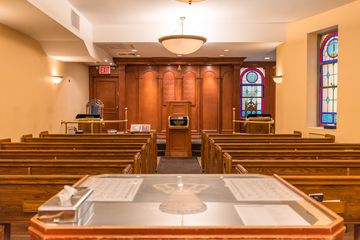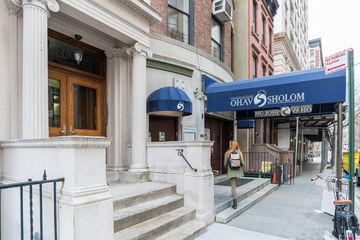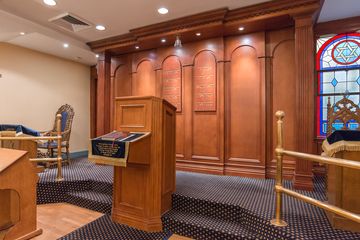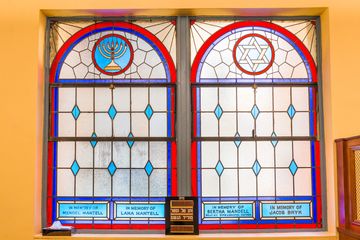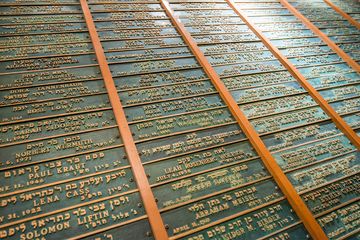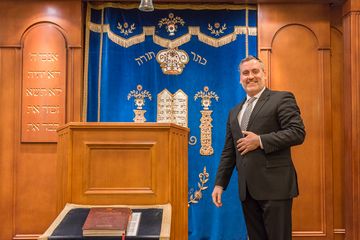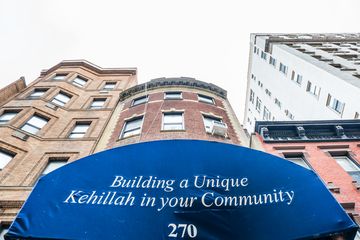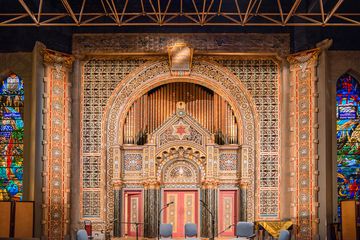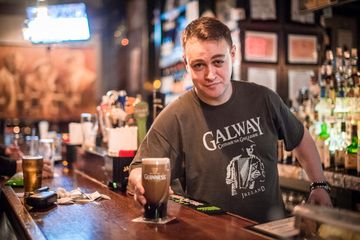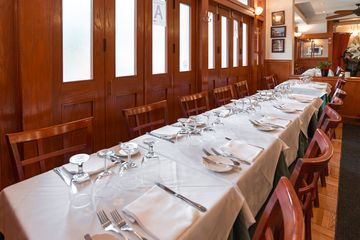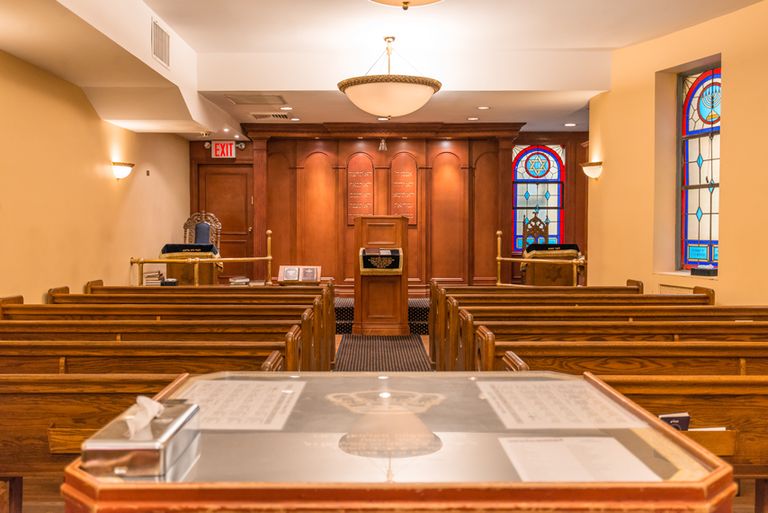
Though Ohav Sholom may not be as old as some of the surrounding synagogues that can trace their roots back to the nineteenth century, it has a rich history. German Jews founded the synagogue in 1940, in the very beginning stages of World War II, before the United States entered the fight. The founders of Ohav Sholom had managed to make an early escape, fleeing the Nazi regime and relocating to New York. The congregation grew out of a desire to celebrate the founders' pride in their Jewish identity.
I spoke to Rabbi Aaron D. Mehlman, who has been Ohav Sholom's rabbi since 1995. He is a dynamic figure, quick to smile and quicker to crack a joke. He showed me around the synagogue, past the sounds of children playing in the preschool upstairs. The congregation moved to the current location in 1955 and the synagogue was renovated in the early 2000s, replacing fluorescent bulbs with warmer light sources, raising the front area, retiling the floor, and repainting the walls. Rabbi Mehlman informed me that the building used to be a one-family townhouse. He and his family now live in the Rabbi's quarters on the top floor, a space that used to be a children's nursery. He took me outside briefly to show me the windows of his home: they are noticeably smaller than the windows on the other floors, demonstrating an early version of child-proofing. Windows were designed with higher bottom sills so that children could not lift themselves up onto them. Rabbi Mehlman told me that he once had the pleasure of glancing at the original blueprints of the building, which were so old that they were written on velum.
Whereas many synagogues are large and cavernous, Ohav Sholom is cozy and gives off a strong feeling of home. There are colorful stained glass windows along one side and a beautiful blue parokhet decorating the ark, behind a sliding panel. When I visited, Rabbi Mehlman was in talks with the board to renovate the screen that divides men from women during the orthodox service. Where there was a wire screen, Rabbi Mehlman was hoping to put a different material, such as an opaque or stained glass.
Along with leading Ohav Sholom, Rabbi Mehlman has his own kosher certifying business called "Make it Kosher." The business began thanks to one of his congregants, who had invested in a Dunkin Donuts and wanted to make sure that each step of the doughnut process was kosher. Rabbi Mehlman visited the Dunkin Donut mix plant in Boston, checked it out, gave out a certificate, and "the rest is history." Along with many local eateries, Rabbi Mehlman continues his relationship with "tons" of Dunkin Donuts, his very first account.
I asked Rabbi Mehlman about his congregation, and he mentioned that though many of the congregants are "very" local, some people come from as far as streets in the 50s and 60s, despite the fact that they walk to the synagogue on Shabbat and other holidays. The rabbi joked, "We try discouraging them, but they keep coming!" He then went on to say that he has a sixty to eighty percent turnover rate - "Every three-to-five years I have a new synagogue." He explained that young people come to the area for school and then have to leave because of the price of rent. There are, however, members of the congregation who have been attending services for generations – "the original crew," as the rabbi calls them. For example, the gabbai, who orchestrates the services, has been around for fifty years. There is also a ninety-eight year old Holocaust survivor who still tries to make most of the services, despite his age. Rabbi Mehlman then shared with me that this gentleman especially wanted to attend the upcoming service that was about Amalek, the archenemy of the Jewish people in the Bible. His reasoning for wanting to be there was that he "had seen Amalek," firsthand, referring to Hitler and the Nazis. The man, currently living on the Upper West Side, survived five different labor and concentration camps.
Rabbi Mehlman is extremely proud of his congregation and that there are "no fights here." He has heard of many synagogues where there are issues with politics, back-stabbing and secessions, but insists that Ohav Sholom has never been plagued with those troubles. "No one's sought to overthrow me, yet," he joked. Instead, Ohav Sholom is "an oasis of peace in Manhattan." The rabbi informed me that "Ohav Sholom" means "lover of peace" in Hebrew: "It's like an inside joke. We really get along."
